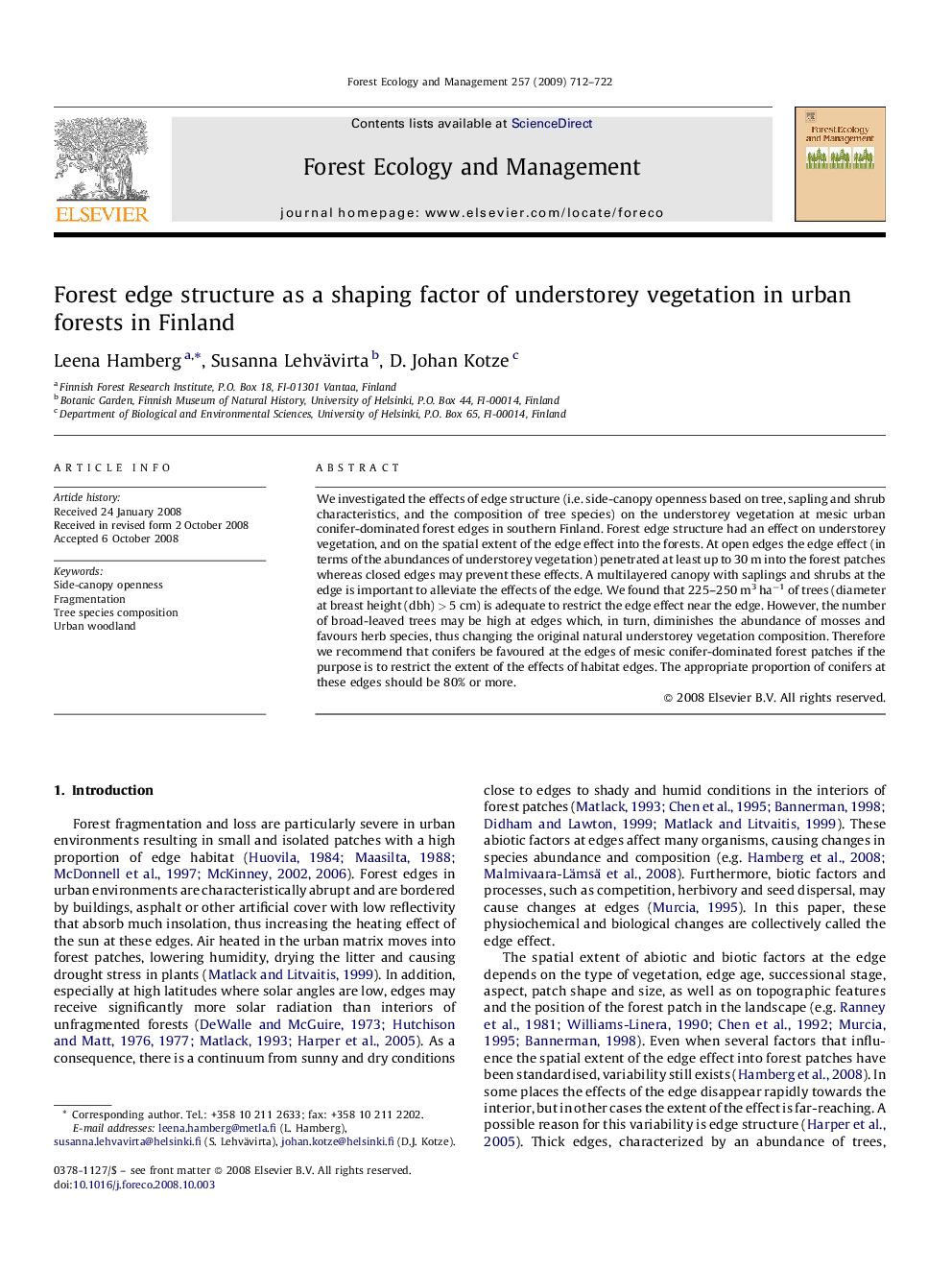| Article ID | Journal | Published Year | Pages | File Type |
|---|---|---|---|---|
| 89295 | Forest Ecology and Management | 2009 | 11 Pages |
We investigated the effects of edge structure (i.e. side-canopy openness based on tree, sapling and shrub characteristics, and the composition of tree species) on the understorey vegetation at mesic urban conifer-dominated forest edges in southern Finland. Forest edge structure had an effect on understorey vegetation, and on the spatial extent of the edge effect into the forests. At open edges the edge effect (in terms of the abundances of understorey vegetation) penetrated at least up to 30 m into the forest patches whereas closed edges may prevent these effects. A multilayered canopy with saplings and shrubs at the edge is important to alleviate the effects of the edge. We found that 225–250 m3 ha−1 of trees (diameter at breast height (dbh) > 5 cm) is adequate to restrict the edge effect near the edge. However, the number of broad-leaved trees may be high at edges which, in turn, diminishes the abundance of mosses and favours herb species, thus changing the original natural understorey vegetation composition. Therefore we recommend that conifers be favoured at the edges of mesic conifer-dominated forest patches if the purpose is to restrict the extent of the effects of habitat edges. The appropriate proportion of conifers at these edges should be 80% or more.
